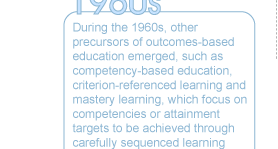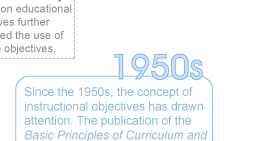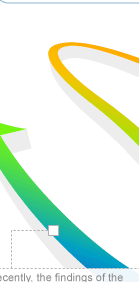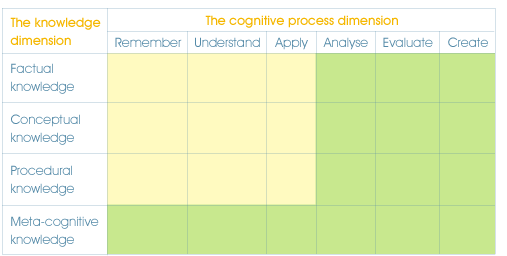
|
||||||||||||||||||||||||||||||||||||||||||||||||||||||||||||||||||||||||||||||||||||||||||||||||||||||||||||||||||||||||||||||||||||||||||||||||||||||
|
||||||||||||||||||||||||||||||||||||||||||||||||||||||||||||||||||||||||||||||||||||||||||||||||||||||||||||||||||||||||||||||||||||||||||||||||||||||
|
||||||||||||||||||||||||||||||||||||||||||||||||||||||||||||||||||||||||||||||||||||||||||||||||||||||||||||||||||||||||||||||||||||||||||||||||||||||
|
||||||||||||||||||||||||||||||||||||||||||||||||||||||||||||||||||||||||||||||||||||||||||||||||||||||||||||||||||||||||||||||||||||||||||||||||||||||
|
Andrich, D. (2002). A framework relating outcomes based education and the taxonomy of educational objectives. Studies in Educational Evaluation,28, p.35-59. Brady, L. (1997). Assessing curriculum outcomes in Australian schools. Educational Review, 49(1), 57-65 Bloom, B. S. (1956). Taxonomy of Educational Objectives, Handbook I: The Cognitive Domain. New York: David McKay Co Inc. Bloom, B. S. (1968). Learning for Mastery. ERIC Document Reproduction Service No. ED 053 419. The Chinese University of Hong Kong. (2006). An Integrated Framework for Curriculum Development and Review. Hong Kong: CUHK. Retrieved on 21 August 2007 at https://www.cuhk.edu.hk/v6/en/teaching/images/rev_integf_ug_2007.pdf. D'Andrea, V. M. (2003). Organizing teaching and learning: Outcomes-based planning. In Fry, H., Ketteridge, S., & Marshall, S., A Handbook for Teaching & Learning in Higher Education: Enhancing Academic Practice. 2nd ed. (pp. 41-57). London; Sterling, VA: Kogan Page Limited. Dejager, H. J and Nieuwenhuis, F. J. (2005). Linkages between total quality management and the outcomes-based approach in an education environment. Quality in Higher Education, 11(3), 251-260. Ecclestone, K. (1999). Empowering or ensnaring?: The implications of outcome-based assessment in higher education. Higher Education Quarterly, 53(1), 29-48. Ewell, P. (2006a). Assessing assessment: The SAUM evaluator's perspective. In Steen, L. A., Supporting Assessment in Undergraduate Mathematics (pp. 19-28). US: Mathematical Association of America. Ewell, P. (2006b). Applying Student Learning Outcomes Concepts and Approaches at Hong Kong Higher Education Institutions: Current Status and Future Directions. Second Study Report. National Center for Higher Education Management Systems (NCHEMS). Gosling, D., & Moon, J. (2001). How to Use Learning Outcomes and Assessment Criteria. London: Southern England Consortium for Credit Accumulation and Transfer. Harden, R. M., Crosby, J. R., & Davis, M.H. (1999). An introduction to outcome-based education. Medical Teacher, 21(1), 7-14. Hartel, R. W. (2004). Making the transition to outcomes-based instruction. Journal of Food Science, 69 (3), 96-97. Hartel, R. W. (2006). 2001 IFT education standards: A 5-year perspective. Journal of Food Science Education, 5, 65-69. Hartel, R. W., & Gardner, D. (2003). Making the transition to a food science curriculum based on assessment of learning outcomes. Journal of Food Science Education, 2, 32-39. Kalman, D., Pascal, M., & Stallings, V. (2006). Learning outcomes assessment: Stimulating faculty involvement rather than dismay. In Steen, L. A., Supporting Assessment in Undergraduate Mathematics (pp. 143-148). US: Mathematical Association of America. Mathematical Association of America (2001), Guidelines for Programs and Departments in Undergraduate Mathematical Sciences, Retrieved August 21, 2007, from http://www.maa.org/guidelines/guidelines.html. NCIHE (1997). Higher Education in the Learning Society: Report of the National Committee - The Dearing Report. London: HMSO. Retrieved 21 August 2007 from http://www.leeds.ac.uk/educol/ncihe/. Orsmon, P., Merry, S., & Sheffield, D. (2006). A quantitative and qualitative study of changes in the use of learning outcomes and distractions by students and tutors during a biology poster assessment. Studies in Educational Evaluation, 32, 262-287. Otter, S. (1992) Learning Outcomes in Higher Education. London: UDACHE. Spady, W.G. (1994). Outcome-based Education: Critical Issues and Answers. Virginia: American Association of School Administrators. Soudien, C., & Baxen, J. (1997). Transformation and outcomes-based education in South Africa: Opportunities and challenges. Journal of Negro Education, 66(4), 449-459. Trigwell, K., Prosser, M., & Waterhouse, F. (1999). Relations between teachers' approaches to teaching and students' approaches to learning. Higher Education, 37, 57-70. Turbill, J., (2002). Changing the teaching/learning paradigm in literacy education for preservice teachers: One university's experience. Teaching Education (Columbia, SC), 13(1), 69-89. Tyler, R.W. (1950). Basic Principles of Curriculum and Instruction. Chicago: Chicago University Press. Willis, S., & Kissane, B. (1997). Systemic approaches to articulating and monitoring student outcomes: Are they consistent with outcome-based education? Studies in Educational Evaluation, 23(1), 5-30. Andrich, D. (2002). A framework relating outcomes based education and the taxonomy of educational objectives. Studies in Educational Evaluation,28, p.35-59. Brady, L. (1997). Assessing curriculum outcomes in Australian schools. Educational Review, 49(1), 57-65 Bloom, B. S. (1956). Taxonomy of Educational Objectives, Handbook I: The Cognitive Domain. New York: David McKay Co Inc. Bloom, B. S. (1968). Learning for Mastery. ERIC Document Reproduction Service No. ED 053 419. D'Andrea, V. M. (2003). Organizing teaching and learning: Outcomes-based planning. In Fry, H., Ketteridge, S., & Marshall, S., A Handbook for Teaching & Learning in Higher Education: Enhancing Academic Practice. 2nd ed. (pp. 41-57). London; Sterling, VA: Kogan Page Limited. Dejager, H. J and Nieuwenhuis, F. J. (2005). Linkages between total quality management and the outcomes-based approach in an education environment. Quality in Higher Education, 11(3), 251-260. Ecclestone, K. (1999). Empowering or ensnaring?: The implications of outcome-based assessment in higher education. Higher Education Quarterly, 53(1), 29-48. Ewell, P. (2006a). Assessing assessment: The SAUM evaluator's perspective. In Steen, L. A., Supporting Assessment in Undergraduate Mathematics (pp. 19-28). US: Mathematical Association of America. Ewell, P. (2006b). Applying Student Learning Outcomes Concepts and Approaches at Hong Kong Higher Education Institutions: Current Status and Future Directions. Second Study Report. National Center for Higher Education Management Systems (NCHEMS). Gosling, D., & Moon, J. (2001). How to Use Learning Outcomes and Assessment Criteria. London: Southern England Consortium for Credit Accumulation and Transfer. Harden, R. M., Crosby, J. R., & Davis, M.H. (1999). An introduction to outcome-based education. Medical Teacher, 21(1), 7-14. Hartel, R. W. (2004). Making the transition to outcomes-based instruction. Journal of Food Science, 69 (3), 96-97. Hartel, R. W. (2006). 2001 IFT education standards: A 5-year perspective. Journal of Food Science Education, 5, 65-69. Hartel, R. W., & Gardner, D. (2003). Making the transition to a food science curriculum based on assessment of learning outcomes. Journal of Food Science Education, 2, 32-39. Kalman, D., Pascal, M., & Stallings, V. (2006). Learning outcomes assessment: Stimulating faculty involvement rather than dismay. In Steen, L. A., Supporting Assessment in Undergraduate Mathematics (pp. 143-148). US: Mathematical Association of America. NCIHE (1997). Higher Education in the Learning Society: Report of the National Committee - The Dearing Report. London: HMSO. Retrieved 21 August 2007 from http://www.leeds.ac.uk/educol/ncihe/. Orsmon, P., Merry, S., & Sheffield, D. (2006). A quantitative and qualitative study of changes in the use of learning outcomes and distractions by students and tutors during a biology poster assessment. Studies in Educational Evaluation, 32, 262-287. Otter, S. (1992) Learning Outcomes in Higher Education. London: UDACHE. Spady, W.G. (1994). Outcome-based Education: Critical Issues and Answers. Virginia: American Association of School Administrators. Soudien, C., & Baxen, J. (1997). Transformation and outcomes-based education in South Africa: Opportunities and challenges. Journal of Negro Education, 66(4), 449-459. Trigwell, K., Prosser, M., & Waterhouse, F. (1999). Relations between teachers' approaches to teaching and students' approaches to learning. Higher Education, 37, 57-70. Tyler, R.W. (1950). Basic Principles of Curriculum and Instruction. Chicago: Chicago University Press. |
||||||||||||||||||||||||||||||||||||||||||||||||||||||||||||||||||||||||||||||||||||||||||||||||||||||||||||||||||||||||||||||||||||||||||||||||||||||

Copyright 2007 ©
Use of an Outcomes-based Approach
in the Faculty of Science at
The Chinese University of Hong Kong.
All rights reserved.





















